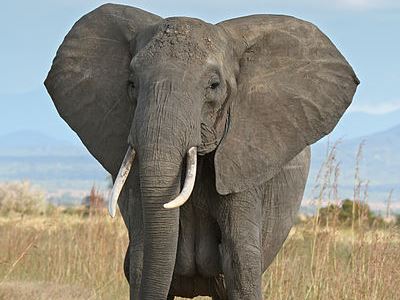Law student challenges China ivory trade
 When part-time Stetson Law student Ethan Arthur began researching an independent study project on ways to end the ivory market and slaughter of African elephants, he had no idea that the project would take him to Arlington, Va.
When part-time Stetson Law student Ethan Arthur began researching an independent study project on ways to end the ivory market and slaughter of African elephants, he had no idea that the project would take him to Arlington, Va.
As part of his project in Professor Lance Long’s Environmental Advocacy course at Stetson, Arthur was asked to collaborate with a government agency on finding a solution to an environmental crisis.
Arthur spent his spring break presenting his solution to African elephant slaughter and ivory trade at an Advisory Council on Wildlife Trafficking meeting. He presented his proposal to the Council during the public comments portion of the March 20 meeting. (Photo of African Bush Elephant, courtesy of Wikimedia Commons.)
“The U.S. is considering more stringent regulation of its own ivory trade and many people took advantage of the public comment portion of the Council meeting to voice their opinions,” said Arthur.
According to an April 7 article in the New York Daily News, 96 African elephants are killed by poachers every day for their tusks, resulting in the slaughter of approximately 35,000 elephants per year. The African elephant will face extinction in a decade if the slaughter is not curbed, according to the article.
“While most people at the Council meeting seemed to agree that stemming the demand for illicit ivory is vital, there is still some disagreement about the best way to accomplish this goal,” said Arthur.
Stopping the legal trade within China could curb the demand for ivory that elephant poachers are working to supply, Arthur explained. He described a way to classify animals under cultural property law to persuade China to stop its legal ivory market.
Details of Arthur’s proposal on how to stop elephant poaching in Africa will be published in the next issue of the Journal of International Wildlife Law and Policy at the end of the spring semester.
by Brandi Palmer



